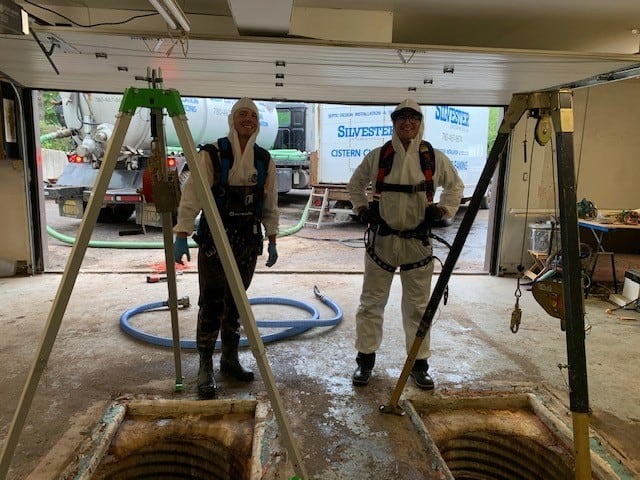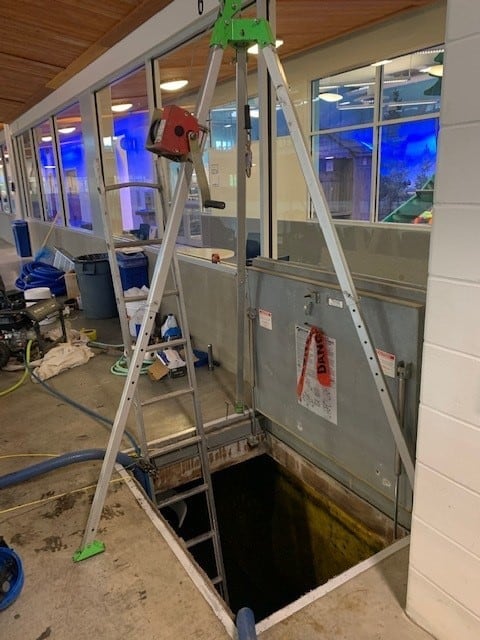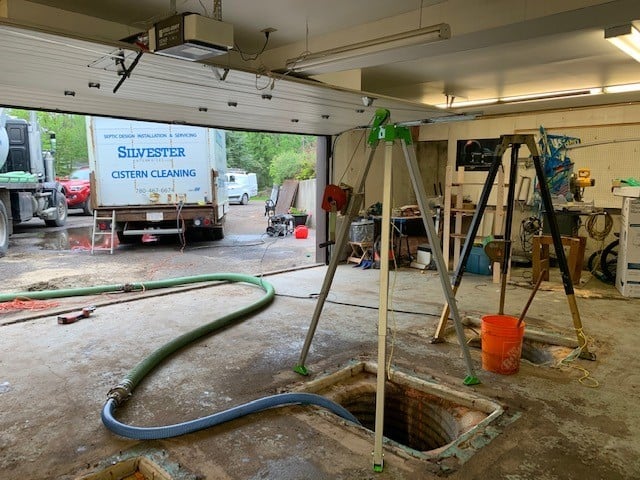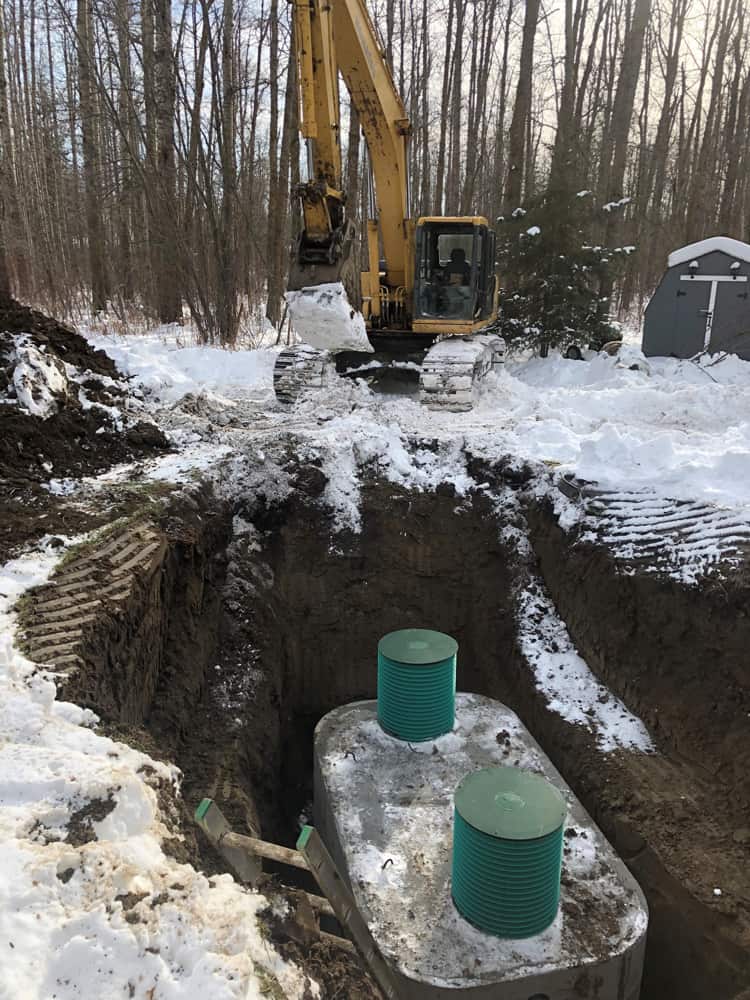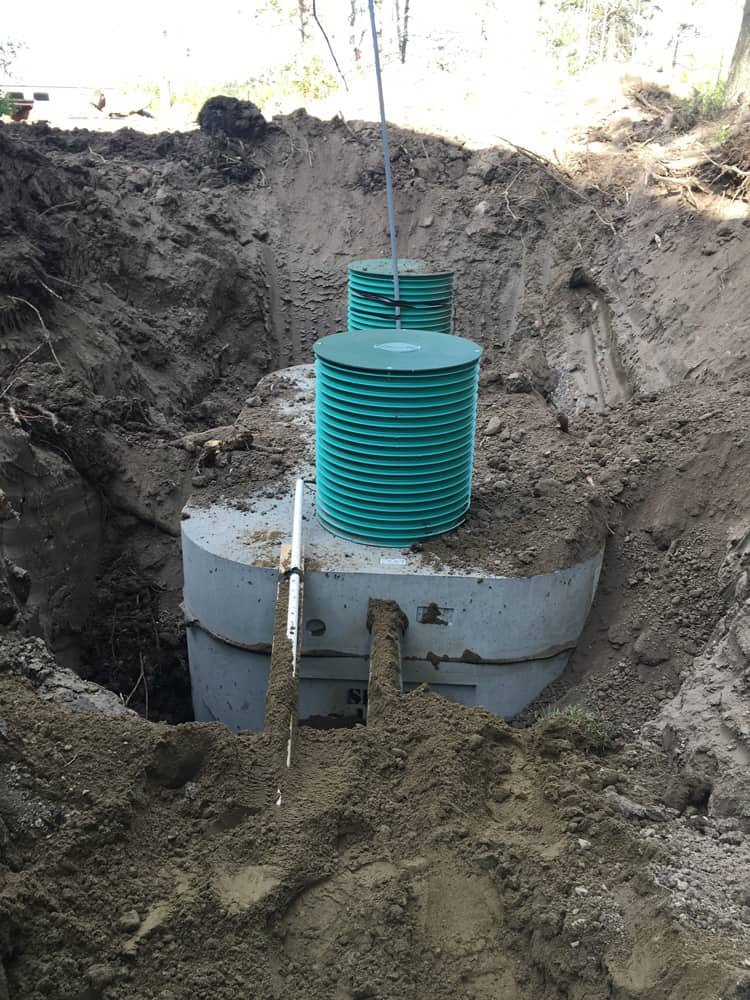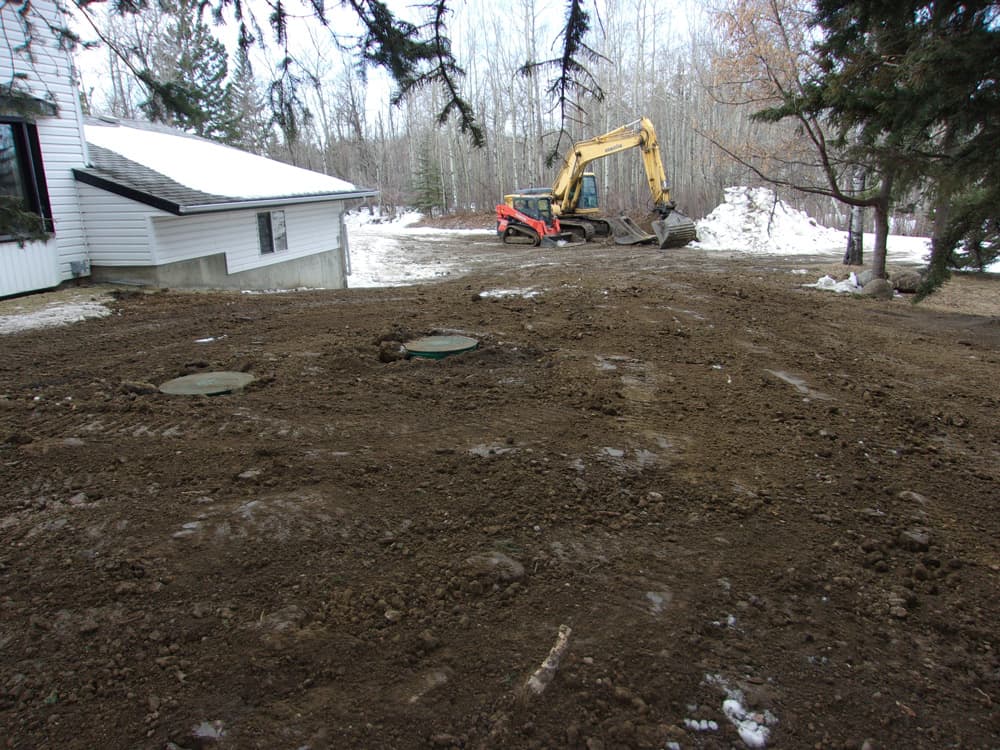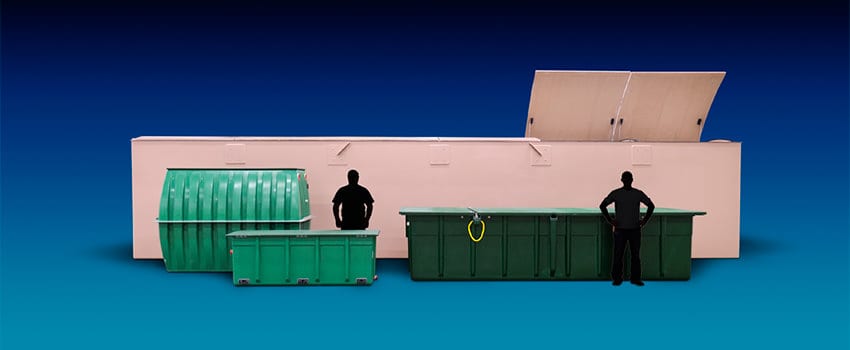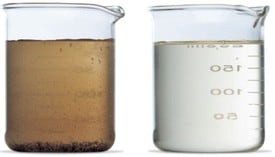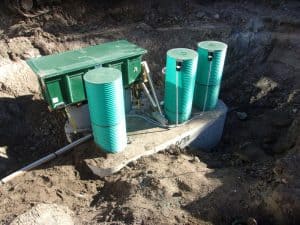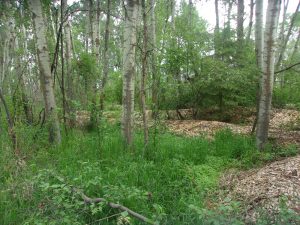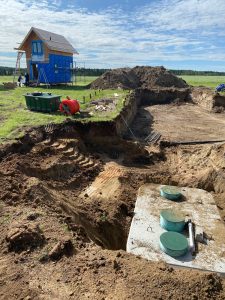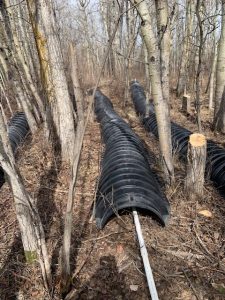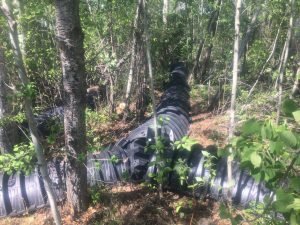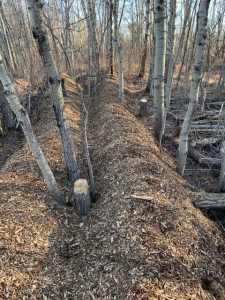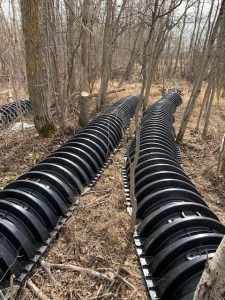Mound System: When site restrictions exist such as slow soil permeability, shallow soil cover or property setbacks a mound system can be installed. A mound is a drainfield that is built above the natural soil surface. The mound is composed of a sand fill that has a gravel-filled bed and a network of small diameter pipes known as the distribution system. From the pump chamber, effluent is pumped through the pipes in controlled, low pressure doses so that uniform distribution is achieved throughout the bed. Treatment occurs as the effluent moves through the sand and returns to the natural soil.
Cistern Cleaning
Cisterns should be cleaned yearly. During your cistern cleaning our technicians will do the following:
- Completely drain your cistern of all water
- Enter your cistern in accordance with all confined space entry safety protocol, and will proceed to scrub the interior of your cistern using a special solution and scrub brush
- Thoroughly rinse and empty your cistern of all substances. Your cistern will now be ready to fill with water and normal use may be resumed
Cistern cleaning can be incredibly dangerous, even resulting in death. It is essential that cleaning only be completed by trained professionals with appropriate safety training.

